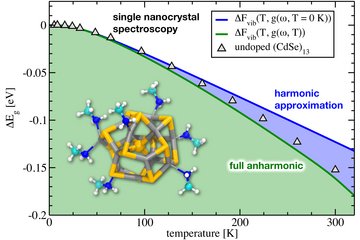All genres
61.
Journal Article
Electropolishing of NiTi shape memory alloys in methanolic H2SO4. Electrochim. Acta 52, pp. 1290 - 1295 (2006)
62.
Journal Article
Impedanzspektroskopie in Korrosions- und Werkstoffforschung. Technische Mitteilungen 99 (1/2), pp. 43 - 46 (2006)
63.
Journal Article
Nanostructures from directionally solidified NiAl–W eutectic alloys. Electrochim. Acta 52, pp. 1799 - 1804 (2006)
64.
Journal Article
Temperature stability of thin anodic oxide films in metal/insulator/metal structures: A comparison between tantalum and aluminium oxide. Thin Solid Films 500, pp. 330 - 335 (2006)
65.
Journal Article
A combined µ-mercury-reference-/ gold-counter-electrode system for microelectrochemical applications. J. Sol. State Electrochem. 10, pp. 941 - 946 (2006)
66.
Journal Article
Effect of the Growth Conditions on the Spatial Features of Re Nanowires Produced by Directional Solidification. Nano Letters 6 (4), pp. 794 - 799 (2006)
67.
Journal Article
Gold Nanostructures by Directional Solid-state Decomposition. Gold Bull 39, pp. 185 - 191 (2006)
68.
Journal Article
Investigation of the effect of impingement angle on tribocorrosion using single impacts. Electrochim. Acta 51, pp. 6521 - 6526 (2006)
69.
Journal Article
Fabrication of rhenium nanowires by selective etching of eutectic alloys. Electrochimica Acta 51 (5), pp. 795 - 801 (2005)
70.
Journal Article
Electrochemical Production of Nanopore Arrays into a Nickel Aluminium Alloy. Electrochimica Acta 50, pp. 3033 - 3039 (2005)
71.
Journal Article
Scanning Droplet Cell investigations on single grains of a FeAlCr light weight ferritic steel. Electrochimica Acta 51, pp. 978 - 983 (2005)
72.
Journal Article
Design and construction of a micro-indenter for tribological investigations. Mat.-Wiss. Werkstofftech. 36, pp. 13 - 17 (2005)
73.
Journal Article
Effect of Pretreatment on the Intermetallics in Aluminium Alloy 2024-T3. Zeitschrift für Physikalische Chemie 219, pp. 1505 - 1518 (2005)
74.
Journal Article
Effect of pretreatment on the intermetallics in aluminum alloy 2024-T3. Zeitschrift fur Physikalische Chemie-International Journal of Research in Physical Chemistry & Chemical Physics 219 (11), pp. 1505 - 1518 (2005)
75.
Journal Article
Iron corrosion by novel anaerobic microorganisms. Nature; Nature Publishing Group, London 427 (6977), pp. 829 - 832 (2004)
76.
Journal Article
Electrochemical characterizations of precipitates formed on zinc in alkaline sulphate solution with increasing pH values. Electrochemistry Communicatios 6, 8, pp. 800 - 804 (2004)
77.
Journal Article
Surface treatment of NiTi for medical applications. Minimally Invasive Therapy & Allied Technologies 13, 4, pp. 240 - 247 (2004)
78.
Journal Article
The Role of Chromate in Filiform Corrosion Inhibition. Electrochimica Acta 49 (10), pp. 1675 - 1685 (2004)
79.
Journal Article
Microscopic and nanoscopic aspects of corrosion and corrosion protection. Electrochimica Acta 48, 9, pp. 1093 - 1324 (2003)
80.
Journal Article
The Role of Chromate in Filiform Corrosion Inhibition. Electrochimica Acta 48 (9), pp. 1211 - 1222 (2003)











